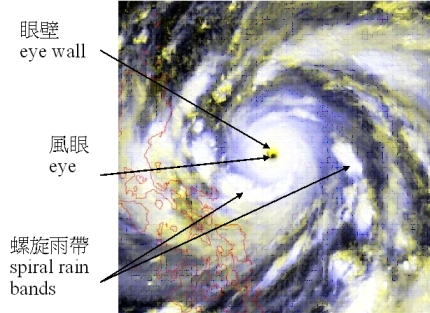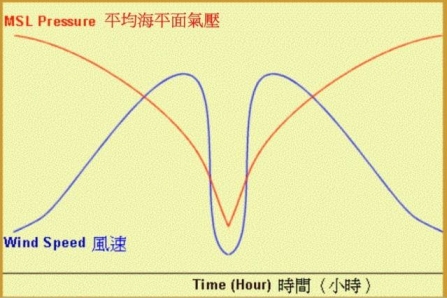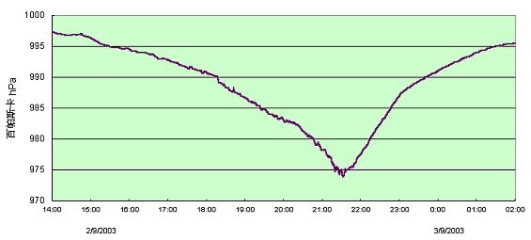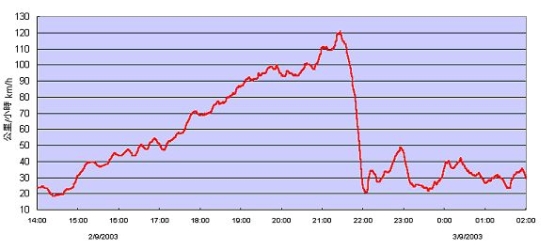Structure of Typhoons
Structure of Typhoons
CHAN Chik-cheung
When a tropical cyclone is affecting Hong Kong, the Hong Kong Observatory will issue Tropical Cyclone Bulletins and we will come across terms such as the eye of a typhoon, its spiral rain bands, etc. Actually what do these terms mean?
Based on the cloud structure, a mature typhoon can roughly be divided into three regions, namely the eye, the eye wall and the spiral rain bands (Figure 1).

Figure 1. Clouds of a tropical cyclone (The cloud imagery was originally captured by GMS-5 of JMA)
The "eye" is roughly circular and is found at the centre of a typhoon. Its size varies and can range from below 10 km to over 200 km across, but most are about 30 to 60 km in diameter.
Winds are comparatively light and the weather is fair inside the eye. There is little or no rain and one can sometimes see the blue sky or stars. The eye is the region of lowest surface pressure (Figure 2 & 3) and highest temperatures. Compared with its surroundings, the eye may be up to 2℃ warmer at the surface and 10℃ or more at an altitude of 12 km.

Figure 2. The mean sea level pressure and wind speed over a location during the passage of a typhoon eye

Figure 3. The air pressure recorded at Lau Fau Shan when Typhoon Dujuan was close to Hong Kong (2-3 September 2003)
The eye is surrounded by the "eye wall", a roughly circular ring of thick clouds. Inside the eye, the air is sinking. On the other hand, the eye wall has very deep convection (i.e., ascent) and is the area of highest surface winds and heavy rain in the typhoon. Figure 4 shows how the winds at Lau Fau Shan changed during the passage of Typhoon Dujuan in 2003. They increased significantly as the eye wall of Dujuan approached and decreased rapidly as the storm moved away.

Figure 4. The wind speed recorded at Lau Fau Shan when Typhoon Dujuan was close to Hong Kong (2-3 September 2003)
Convection outside the eye is organized into long, narrow rain bands which are oriented roughly in the same direction as the surface wind. Because these bands appear to spiral into the centre of a tropical cyclone, they are sometimes called "spiral rain bands".